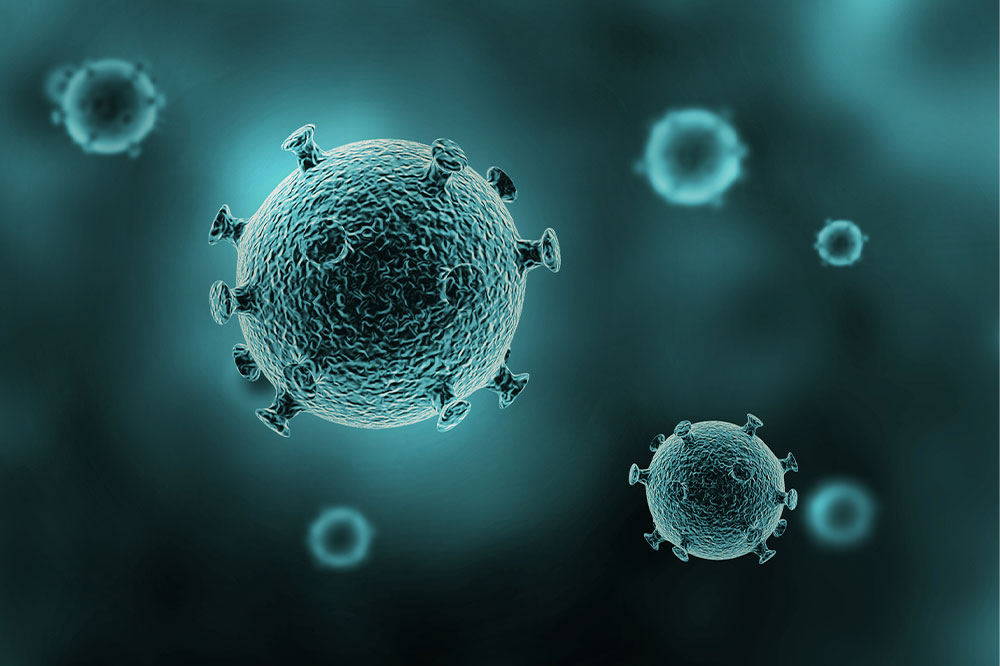4 of the most common infectious diseases
Through decades of research, more than 300 agents that cause infectious diseases have been discovered. These agents significantly impact your health and are transferrable to other seemingly healthy individuals, increasing the risk of exposure. Knowing the common symptoms and risk factors of these infectious diseases and how to keep them at bay is crucial to keeping yourself and those around you safe. Here’s everything you should know about these common conditions:

Causes and risk factors
At any given point in time, millions of microorganisms live inside your body. They are beneficial for your health and perform functions such as breaking down food and building your immunity. However, not all microorganisms are beneficial for your health. Some invade your body’s immune system and cause diseases. Infectious diseases are caused by the invasion of pathogens like parasites, bacteria, viruses, and fungi. And these pathogens are transferrable through contaminated food, water, and soil, other infected individuals, and stings and bites from certain bugs and insects.
Common infectious diseases
Millions of people are affected by infectious diseases around the world. Here are the most common infectious diseases to be aware of:
Staph infections
Staph is one of the most common infectious diseases existing in the country. This is a condition caused by the Staphylococcus bacteria strain and usually affects the digestive system, skin, bones, lungs, and heart. Here are some common signs of a staph infection:
- Boils or blisters on the skin.
- Peeled-off skin
- Pus-filled blisters
- Wheezing and shortness of breath.
- Inflammation and pain in the bones.
Often, these factors play a crucial role in causing staph infections:
- Cuts on the skin
- Food poisoning
- Weak immunity
- Having heart defects
- Suffering from eczema, diabetes, or vascular diseases
Most cases of staph infections are mild and can be treated with topical antibiotic creams. Antibiotics are intravenously administered if the case is severe.
Salmonella
Also known as salmonellosis, this infectious disease is caused by bacteria affecting your intestinal tract. It affects millions of people in the country each year. Possible signs of salmonella infection include:
- Fever
- Nausea
- Chills
- Headache
- Abdominal cramps
- Diarrhea
- Blood in the stool
Here are some common causes of this infection:
- Consuming raw or undercooked eggs or poultry.
- Drinking unpasteurized milk.
- Eating contaminated fruits and vegetables.
The first line of treatment usually involves replacing lost electrolytes due to dehydration. You may also be advised antibiotics and anti-diarrhea pills.
Influenza
Influenza is commonly known as the flu, and this infectious disease affects respiratory components like the nose, throat, and lungs. Here are some typical influenza symptoms that you must know about:
- Chills or fever
- Headache
- Muscle pain and stiffness
- Cough
- Sore throat
- Severe fatigue
Common risk factors of influenza include,
- It is caused by the influenza A or B virus and is an extremely contagious condition.
- It spreads between people and even from touching surfaces with the influenza virus on it.
- People who suffer from heart and kidney diseases, diabetes, and liver problems, are more prone to this condition.
Normally, the symptoms subside on their own in a few days. All you need are rest and plenty of fluids. In case you don’t get better, your doctor may prescribe antivirals. You may also be advised painkillers to manage body aches.
Norovirus
Norovirus, also known as the winter vomiting bug, is a highly contagious disease. It is caused by a virus and is one of the major causes of foodborne illnesses. Often, people mistakenly call this infectious disease “stomach flu,” but it’s not related to flu or its respiratory symptoms. This disease mainly causes gastrointestinal symptoms like
- Stomach cramps
- Vomiting
- Diarrhea
- Low-grade fever
- Muscle pain
- Headache
- Vomiting without warning
Some people may not show any symptoms but may still pass on the disease to others. Norovirus is significantly caused by
- Having food that’s contaminated by an infected person.
- Coming in contact with infected surfaces and touching your mouth without washing your hands.
- Having uncooked shellfish harvested in contaminated water.
There is no known treatment for this infectious disease. Doctors usually advise people to let it run its due course. If there is dehydration from vomiting and diarrhea, it is treated by replacing lost liquids. Infected people are advised plenty of rest and to avoid contact with other healthy people. Antibiotics don’t help in treating this condition.
These are just some of the common infectious diseases prevalent in the country. There are many more such diseases that affect thousands each year. The best way to stay safe from getting infected is to know their symptoms and consult your doctor immediately if you spot any signs.